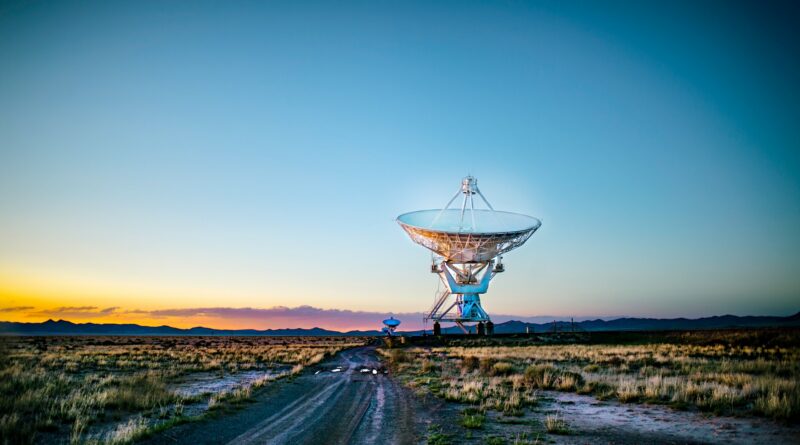Unlocking the Universe: Cutting-Edge Approaches to Discovering Extraterrestrial Life
Unlocking the Universe: Cutting-Edge Approaches to Discovering Extraterrestrial Life
Boris Menin
The enduring human quest to understand if we are alone in the universe has driven the development of the Search for Extraterrestrial Intelligence (SETI) programs. These programs employ a diverse toolkit of techniques aimed at detecting potential technosignatures, or signals indicative of technological activity beyond Earth. The traditional methods have mainly involved electromagnetic wave detection (both radio and optical SETI) and astrobiology, which includes the search and characterization of exoplanets and studies of the interstellar medium.
Electromagnetic wave detection stands as one of the cornerstone methodologies in SETI, exploiting the properties of radio and optical waves to travel vast cosmic distances with relatively minimal absorption and scattering. Radio SETI, first initiated by Frank Drake’s Project Ozma, seeks to detect narrowband radio signals that might be indicative of extraterrestrial technology. These signals are typically centered around specific frequency bands that are unlikely to occur naturally, thus suggesting an artificial origin. Utilizing large radio telescopes such as the Green Bank Telescope and the now-defunct Arecibo Observatory, radio SETI represents one of the pioneering methods in the search for extraterrestrial intelligence. Through advanced instrumentation and ever-increasing sensitivity of newer radio telescopes like the MeerKAT array and the forthcoming Square Kilometre Array (SKA), radio SETI has significantly expanded its scope and detection capabilities.
—the potential discovery of extraterrestrial intelligence would revolutionize our understanding of the universe and our place within it—
Optical SETI, on the other hand, explores the potential for brief, directed light pulses as a means of interstellar communication. This method involves specialized detectors on optical telescopes searching for anomalous, high-intensity pulses that could be indicative of advanced civilizations communicating via lasers. While atmospheric scattering and absorption present notable challenges, advancements in photodetector technology have increased the accuracy and reliability of these detections. Institutions such as the Optical SETI Observatory at Harvard University are key contributors to this field, leveraging cutting-edge technology and collaborative efforts to enhance detection capabilities.
 Astrobiology, another critical component of SETI, focuses on identifying environments conducive to life beyond Earth. The discovery and detailed characterization of exoplanets through missions like Kepler and TESS have remarkably expanded our understanding of potential habitable worlds. Techniques such as the transit method, which detects the dimming of a star as a planet crosses in front of it, have enabled the identification of thousands of exoplanets, including those within the habitable zones of their parent stars. Characterizing the atmospheres of these exoplanets through spectroscopic observations, facilitated by advanced instruments on the Hubble Space Telescope and the James Webb Space Telescope, offers the potential for detecting biosignatures—chemical indicators of life processes, such as the presence of methane, oxygen, or water vapor.
Astrobiology, another critical component of SETI, focuses on identifying environments conducive to life beyond Earth. The discovery and detailed characterization of exoplanets through missions like Kepler and TESS have remarkably expanded our understanding of potential habitable worlds. Techniques such as the transit method, which detects the dimming of a star as a planet crosses in front of it, have enabled the identification of thousands of exoplanets, including those within the habitable zones of their parent stars. Characterizing the atmospheres of these exoplanets through spectroscopic observations, facilitated by advanced instruments on the Hubble Space Telescope and the James Webb Space Telescope, offers the potential for detecting biosignatures—chemical indicators of life processes, such as the presence of methane, oxygen, or water vapor.
The analysis of the interstellar medium also plays a significant role in SETI, revealing the presence of complex organic molecules, amino acids, and other prebiotic substances. These discoveries suggest that the building blocks of life are widespread throughout the galaxy, enhancing the prospects of finding habitable worlds. Cutting-edge observational techniques, such as those enabled by the Atacama Large Millimeter/submillimeter Array (ALMA) and the Herschel Space Observatory, provide unprecedented insights into the chemical processes within interstellar clouds and the potential for life to emerge in various extraterrestrial environments.
Despite these advancements, traditional methods face inherent limitations, particularly regarding the selection of appropriate models to interpret experimental data. Traditional model selection methods often rely on researcher intuition and experience, introducing subjectivity and potential biases. To address these limitations, the Finite Information Quantity (FIQ) approach is presented as an objective solution for model selection. FIQ acknowledges the inherent constraints in information processing capacity within physical systems, providing objective criteria for evaluating different models. By considering comparative uncertainty, FIQ minimizes bias and promotes a more comprehensive understanding of phenomena.
By harnessing advanced algorithms, the integration of machine learning into SETI markedly enhances the ability to process massive datasets and detect potential extraterrestrial signals that might be missed by human analysis.
To assess the effectiveness of the FIQ approach, it was compared with ten existing model selection techniques: Least Squares Method, Maximum Likelihood Estimation, Akaike Information Criterion, Bayesian Inference, Nonlinear Regression, Monte Carlo Simulation, Optimization Techniques, Machine Learning Algorithms, Principal Component Analysis, and Gaussian Processes. Each of these methods, including traditional approaches, presents inherent limitations such as bias from researcher intuition, a narrow focus on overfitting, and the neglect of model uncertainty.
The integration of machine learning into SETI represents a significant leap forward. Machine learning algorithms, particularly those based on neural networks and deep learning architectures, excel at processing vast amounts of data and identifying complex patterns that may elude human observers. By training these algorithms on labeled datasets containing examples of both artificial signals and background noise, researchers can teach them to recognize distinguishing features of potential extraterrestrial transmissions. This ability to adapt and evolve over time with new data enhances detection accuracy and reliability. However, challenges such as overfitting and the interpretability of machine learning models remain, necessitating the careful design of training datasets to encompass a wide range of signal variations and the development of explainable AI techniques.
While traditional approaches often overlook uncertainty inherent within the models themselves, the FIQ method provides a framework for addressing these challenges. In applying the FIQ method, various cases such as measuring physical constants, unveiling accuracy in underwater electrical discharges, and optimizing speed of sound measurements demonstrate its effectiveness in achieving more accurate and reliable models. By incorporating system constraints into model selection, the FIQ method offers deeper insights into physical systems and promotes robust scientific exploration.
The societal impact of SETI is profound, as the potential discovery of extraterrestrial intelligence would revolutionize our understanding of the universe and our place within it. SETI fosters international collaboration, uniting scientists, engineers, and policymakers in a shared quest. The pursuit of extraterrestrial intelligence prompts profound philosophical and existential reflections, challenging fundamental assumptions about life, evolution, and our place in the cosmos.
As technology continues to advance, so does the potential for SETI. The adoption of newer methodologies and incorporation of modern advancements such as machine learning and the FIQ approach will play a pivotal role in these efforts. Expanding the search spectrum to include alternative communication methods such as neutrinos or gravitational waves will diversify search strategies and increase the likelihood of detecting potential signals from advanced civilizations.
Interdisciplinary collaboration remains essential for advancing SETI research. By synthesizing insights from various scientific fields and leveraging cutting-edge technologies, researchers can address the inherent challenges and uncertainties of the search for extraterrestrial intelligence. The integration of explainable AI techniques will enhance the reliability and transparency of machine learning-based detections, contributing to the robustness of SETI methodologies.
In conclusion, the multifaceted approach of SETI, combining traditional methods with modern advancements, holds great promise for unveiling the mystery of life beyond Earth. By embracing innovative methodologies and addressing inherent uncertainties, researchers can construct more accurate and reliable models, leading to a deeper understanding of the cosmos and potentially groundbreaking discoveries. The quest for extraterrestrial intelligence is a journey of persistence, innovation, and collaboration, driven by humanity’s relentless curiosity and desire to explore the unknown. Through interdisciplinary efforts and technological advancements, SETI continues to push the boundaries of human knowledge and understanding, offering the potential for profound discoveries that could reshape our understanding of the universe and our place within it.
Translation of the article: Unveiling the Cosmos: A Multifaceted Search for Extraterrestrial Intelligence (SETI) in the Era of Advanced Technologies, in European Journal of Science, Innovation and Technology, 4(3), 1848-1889, 2024
Cite this article in APA as: Menin, B. Unlocking the universe: Cutting-edge approaches to discovering extraterrestrial life. (2024, July 9). Information Matters, Vol. 4, Issue 7. https://informationmatters.org/2024/07/unlocking-the-universe-cutting-edge-approaches-to-discovering-extraterrestrial-life/
Author
-
BORIS M. MENIN (Member, IEEE) received an MSc degree in 1973 at Electro-Technical Communication Institute, department of Multichannel Electrical Communications and received a PhD in Mass and Heat Transfer at the Technological Institute of Refrigeration Industry, Russia, St-Petersburg in 1981. Dr. Menin was Director of the Laboratory of Ice Generators and Plate Freezers in St. Petersburg from 1977 to 1989, after which he emigrated from the Soviet Union to Israel. There he was the Chief Scientist at Crytec Ltd. (1999–2008) and managed the development, production, and marketing of pumpable ice generators and cold energy storage systems, while also modeling and manufacturing high-accuracy instrumentation for heat and mass processes. He is now an Independent Mechanical & Refrigeration Consultation Expert. In addition, he has managed Task 3.1 of the European FP6 project in the field of food cold chain and several of Israel’s (EUREKA, integrated project of EU and Chief Scientist Office of Israel’s Ministry of Industry) in the field of cold energy storage systems based on pumpable ice technology. He is an author of five books and 67 journal articles, and is a member of ASHRAE (USA) and SEEEI (Israel).
View all posts






